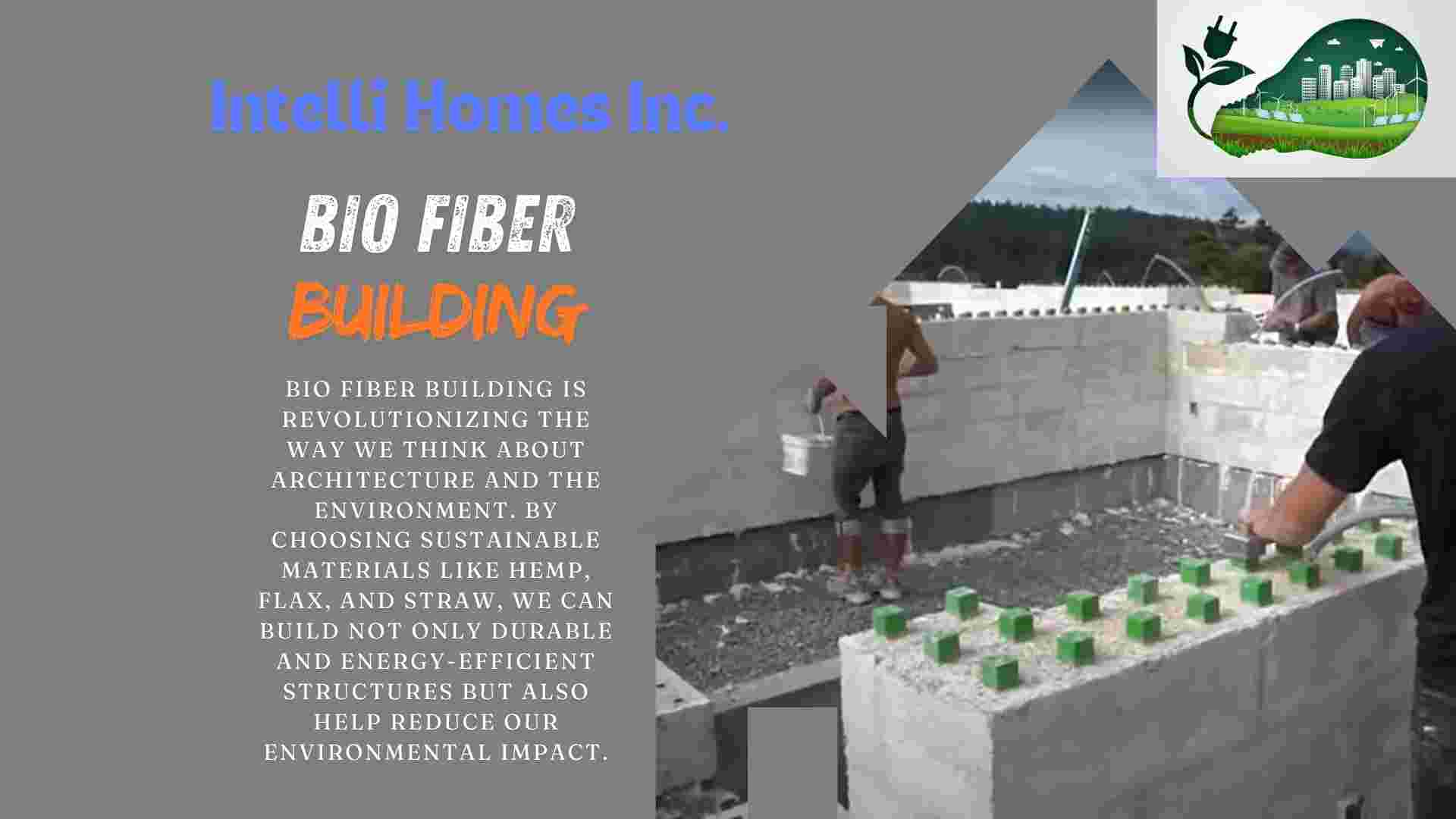In today’s fast-paced world, sustainable construction is becoming more than just a trend—it’s a necessity. As we look for ways to reduce our environmental footprint, one approach is quickly gaining traction: Bio Fiber Building. In this article, we’ll dive into what Bio Fiber Building is, its benefits, real-world applications, and how it’s set to transform the future of construction.
What is Bio Fiber Building?
So, what exactly is Bio Fiber Building? At its core, it’s an innovative construction method that uses natural fibers like hemp, flax, and straw to create eco-friendly, sustainable building materials. These fibers are combined with a binder to form building components such as panels, blocks, and insulation. It offers a green alternative to traditional materials like concrete and steel, which are resource-intensive and have a heavy environmental impact.
Why Bio Fiber Building is a Game-Changer
Bio Fiber Building offers a range of compelling benefits that position it as a groundbreaking solution in the construction industry:
1. Sustainability
Biofiber materials are not only renewable but also biodegradable, making them a more environmentally friendly option compared to conventional materials. These fibers are sourced from plants that grow quickly and can be replenished, helping to reduce the depletion of natural resources.
2. Energy Efficiency
Biofiber materials provide excellent insulation properties, which help regulate indoor temperatures more effectively. As a result, buildings made from these materials require less energy for heating and cooling, leading to significant savings on energy consumption and costs over time.
3. Health and Wellbeing
Unlike some synthetic building materials that can release harmful chemicals, biofiber products are non-toxic. They promote healthier indoor air quality, creating safer living and working environments. For those prioritizing wellbeing and eco-conscious living, biofiber materials offer peace of mind.
4. Carbon Sequestration
Bio fibers are excellent at capturing and storing carbon dioxide. During their growth, plants like hemp and flax absorb CO2 from the atmosphere, and when used in construction, this captured carbon remains stored in the building materials, helping to offset the building’s overall carbon footprint.

Real-World Applications of Bio Fiber Building
Bio Fiber Building isn’t just a futuristic concept—it’s already making waves around the world. Let’s explore a few real-world examples of how biofiber materials are being used to create sustainable structures.
1. The Zero-Carbon House (UK)
In the UK, the Zero-Carbon House stands as a prime example of how biofiber materials can be harnessed to create a self-sustaining, energy-efficient home. Built using hempcrete and other biofiber-based materials, this home demonstrates the full potential of sustainable construction, achieving net-zero carbon emissions while offering a comfortable living space.
2. The Ecological Office Complex (France)
Over in France, an entire office complex was built using biofiber panels. This project significantly reduced the building’s carbon emissions and energy usage. By utilizing biofiber insulation and wall systems, this office showcases how sustainable materials can perform on a commercial scale, proving their viability for larger structures.
Challenges and Future Prospects
Like any emerging technology, Bio Fiber Building faces a few challenges. The primary hurdles include:
- Public Awareness: More people need to learn about the advantages of biofiber materials to increase demand.
- Building Code Adaptations: Many regions still rely on traditional building codes that don’t account for newer, eco-friendly materials like biofiber.
- Scalability: While biofiber production is growing, it still needs to expand significantly to meet global demand for large-scale projects.
Despite these challenges, the future looks promising. With increased focus on sustainability, there’s no doubt that Bio Fiber Building will become a major player in the construction industry. Innovations are constantly being made in material production, and as awareness grows, so will the adoption of these green building solutions.
How You Can Get Involved
Interested in incorporating Bio Fiber Building into your next project? It’s easier than you think! There are now many suppliers offering biofiber materials, as well as architects and builders who specialize in sustainable design. Whether you’re looking to build a home, an office, or even just remodel a part of your property, biofiber solutions are available to help you make the shift towards eco-friendly construction.
Conclusion
Bio Fiber Building is revolutionizing the way we think about architecture and the environment. By choosing sustainable materials like hemp, flax, and straw, we can build not only durable and energy-efficient structures but also help reduce our environmental impact. From improving indoor air quality to reducing carbon footprints, the advantages of biofiber materials are clear.
As we continue to explore new ways to build a greener future, it’s clear that Bio Fiber Building is more than just a passing trend—it’s the future of construction. Whether you’re a builder, architect, or just someone looking to make more sustainable choices, the time to embrace biofiber technology is now.


